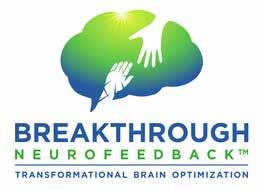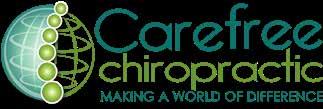Saturday, August 24
9 a.m. – 2 p.m.
See pages 4 & 5 for event details.



Saturday, August 24
9 a.m. – 2 p.m.
See pages 4 & 5 for event details.


By Trina Krug, MS, CDSP FOOD DRINK LIFE
Venturing into the great outdoors does not mean you have to abandon your low-carb lifestyle. Whether you are planning a camping trip, a day hike or a picnic, you can enjoy nature's beauty while sticking to your low-carb life. With some preparation and creativity, you can have delicious and satisfying low-carb meals that fuel your adventures.
The great outdoors offer a unique dining experience, combining fresh air, stunning landscapes and the satisfaction of a well-prepared meal. Planning is crucial for success. Before you set off, think about the meals and snacks you will need. Create a menu that includes a balance of proteins, healthy fats and low-carb vegetables. This will help you avoid high-carb temptations and ensure you have everything you need for a delightful nature experience.
Packing for a low-carb outdoor adventure requires a bit of strategy. Invest in a good cooler to keep your perishables fresh. Use reusable containers to store pre-portioned meals and snacks. This keeps your food organized and reduces waste. Do not forget to pack essential cooking tools like a portable stove, grill or camping cookware. These tools will be invaluable when preparing your meals in the wild. For instance, a well-packed cooler might include pre-cooked chicken, hard-boiled eggs, cheese sticks and cut-up vegetables. These foods are easy to grab and can be eaten without much preparation. Additionally, packing small containers of olive oil, spices and condiments can enhance your meals without taking up too much space.
Breakfast is an important meal that sets the tone for the day, especially when you are engaging in outdoor activities. A nutritious, lowcarb breakfast will provide you with sustained energy.
Consider starting your day with egg muffins. These portable bites can be made ahead of time and they are easy to reheat over a campfire or portable stove. Another excellent option is full-fat Greek yogurt topped with nuts and seeds. This combination offers a good mix of protein and healthy fats, keeping you full and energized.
If you are looking for something a bit more indulgent, try avocado halves topped with smoked salmon. This duo is rich in healthy fats and protein, and it is easy to prepare even in the simplest outdoor kitchen.
Low-carb

Lettuce wraps are a fantastic low-carb option for a delicious lunch that will fuel the rest of your day. Use large lettuce leaves to wrap up your favorite deli meats, cheese and veggies. They are refreshing, satisfying and simple to assemble. Another great lunch idea is chicken salad. Make it ahead of time with diced chicken, mayonnaise, celery and herbs. It is delicious served in a lettuce cup or scooped onto sliced cucumbers. For a heartier option, consider bunless burgers. Cook them on a portable grill or over a campfire and serve with all the usual toppings like cheese, pickles, onions and mustard, wrapped in a large lettuce leaf.
Jerky is another great option. Look for sugar-free varieties to keep your carb intake in check. Pre-cut vegetable sticks like bell peppers, cucumbers and celery paired with a small container of guacamole or ranch dip offer a refreshing and crunchy snack. Finally, if you are looking for a sweet and savory snack, low-carb granola is a great option. This snack is easy to make and convenient to package up.
Proper hydration is crucial, especially when you are active outdoors. Water is a great choice for hydrating, and infused water is a refreshing alternative as well. Add slices of cucumber, lemon or berries to your water for a burst of flavor without added carbs. If you are engaging in strenuous activities, consider an electrolyte drink to replenish lost minerals. Just be sure to choose sugar-free options.

After a day of exploring, there is nothing like settling down to a hearty dinner. Your outdoor kitchen can still produce gourmet-quality meals with the right ingredients and techniques. Grilled meats and vegetables are a staple of outdoor cooking. Marinate chicken, steak or fish at home and pack them in your cooler. Grill them over the fire, pairing with skewers of zucchini, bell peppers and mushrooms. Another convenient option is foil packet meals. Combine your choice of protein — like shrimp or fish — with low-carb vegetables, olive oil and seasonings. Seal the packets and cook them over the campfire until the meat is done and the veggies are tender. Stir-fries are also a great option if you have a portable stove. Sauté sliced beef, chicken or shrimp with low-carb vegetables in a bit of oil, adding soy sauce, garlic and ginger for flavor.
Having a variety of snacks on hand will keep your energy levels up throughout the day. Nuts and seeds are perfect for this. Almonds, walnuts and sunflower seeds are great go-to options. Cheese sticks or pre-cut cheese slices also travel well and provide a satisfying snack.
Staying committed to your lowcarb lifestyle in the great outdoors requires preparation and smart choices. Always read labels when buying packaged foods to check for hidden sugars and carbs. Opt for whole foods that are easy to prepare and cook, keeping it simple. Staying organized with your cooking area and supplies will make meal prep easier. Lastly, be flexible and ready to adapt to changing conditions, whether it is the weather or your schedule.

Eating low carb in the great outdoors is a wonderful way to maintain your diet while enjoying nature. With a bit of planning and creativity, you can enjoy delicious, nutritious meals that fuel your adventures. Embrace the simplicity and satisfaction of outdoor cooking and make your next trip a low-carb success.
Trina Krug, MS, CDSP, is a holistic nutritionist, recipe creator and advocate for human health. Her passion for low-carb lifestyles, gluten-free eating and real nutrition education has led to the creation of Trina Krug. She spends her time creating recipes, hanging out with her family on her farm and actively working on her Doctor of Science in Integrative Health specializing in Functional Nutrition.
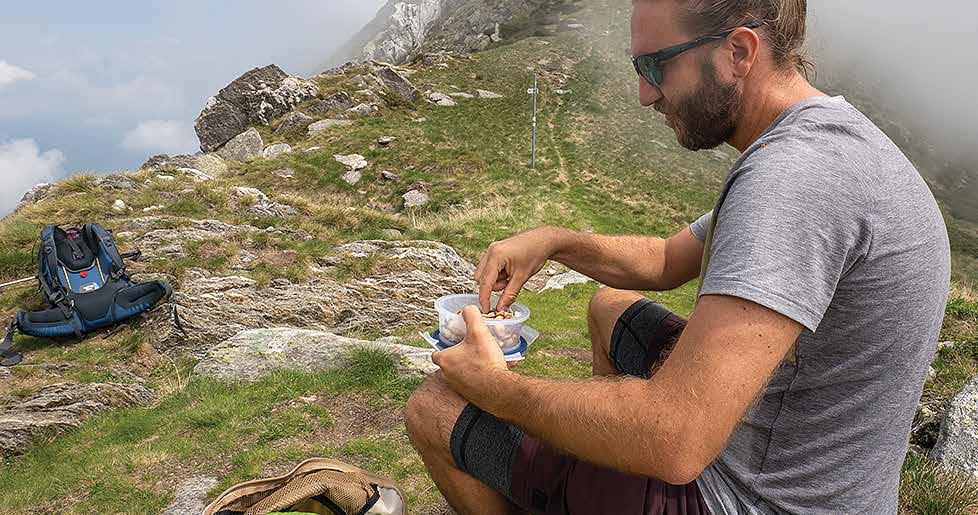
Saturday, August 24, 9 a.m. – 2 p.m.
Colorado Springs Event Center
3960 Palmer Park Blvd.
Join us for this free event! Experts will be promoting physical and mental well-being, fitness, healthful eating, sports, beauty, self-care and more at this highly-anticipated one-day expo.

Room 1
9:15 a.m. Renaissance Med Spa – Self-Care is Health Care
10:15 a.m. Colorado Community Health Alliance – Medicaid 101: Eligibility, Benefits and Local Support
11:15 a.m. Peak Pickleball – The Benefits of Pickleball
12:15 p.m. Health Protection Consulting –Individual and Employee Benefits
Room 2
9:15 a.m. Deeper Stories Counseling – Human Motivation and How To Change
10:15 a.m. Breakthrough Neurofeedback –Why Your Brain is the Most Important Organ You Need to be Thinking About
11:15 a.m. Cereset of Colorado Springs –Enhancing Sleep and Reducing Stress: Natural Brain Healing with Cereset
12:15 p.m. Flagship Health – Primary Care in Colorado
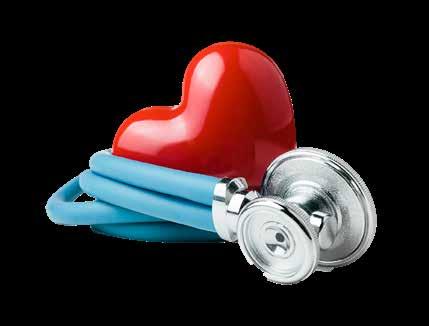

American Vein & Vascular
Aspen Ridge Dental Care and Sleep Solutions
Beard Fitness
Breakthrough Neurofeedback
Carefree Chiropractic
Centura Health/CommonSpirit
Cereset of Colorado Springs
Clear Spring Health
Colorado Community Health Alliance
Derma Lab
Empty Stocking Fund
Five Elements Massage Therapy
Flagship Health
Griffith Centers
Health Protection Consulting
Kennedy Campaign
Kids Rock Pediatric Dentistry
King Soopers Pharmacy
Kissing Camels Family Dentistry
League of Women Voters
Peak Pickleball
Pikes Peak Area Council of Governments
Renaissance Med Spa
Renewal by Anderson

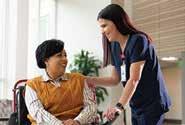
Hospitals, clinics, and caregivers all connected to advance health care in Colorado, Kansas, and Utah. Learn more at mountain.commonspirit.org
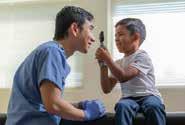


By JayDee Vykoukal WEALTH OF GEEKS
Everybody sleeps, but some people run low on critical hours of rest. According to a National Sleep Foundation study, an alarming trend is forming among teenagers and adults as both age brackets feature subsets that are not getting enough sleep.
The pioneer study found eight out of every 10 teenagers are not getting enough sleep. Similarly, in a Gallup poll from 2023, 57% of respondents indicated that they do not feel their sleep is adequate. Women under 50 made up the largest group of that not-insignificant percentage. In all instances, missing out on restful nights can cause significant concerns for mental health, including increased stress and anxiety, sparking congressional interest.
In March, the NSF hosted the first Congressional briefing on the correlation between mental and sleep health. The “Sleep Health is Mental Health” program is part of NSF’s more extensive campaign to provide resources for the public and policymakers to understand how poor sleep patterns and low-quality sleep can directly impact one’s mental health.
The NSF presented evidence of the link between sleep and mental health during the organization’s Sleep Awareness Week. The presentation for congressional members, staff and stakeholders aimed to take a unique approach to the discussion surrounding the mental health crisis in the United States.
According to an NSF press release, the U.S. Surgeon General, Centers for Disease Control and
Prevention, and National Institute of Health agree there is a rampant “mental health crisis” within the country. The organization demonstrated the tie to poor sleep health through its 2023 and 2024 Sleep in American polls, which evaluated teen and adult sleep quality and mental health symptoms.
Understanding the importance of sleep
NSF’s Sleep in America poll reveals how few people get the needed sleep, providing valuable insight into a significant problem. Sleep deprivation can cause frustration, crankiness and overall difficulty regulating emotions. Young adults who experience overtiredness have problems paying attention and exhibit hyperactivity.
Extended sleep deficiency can cause more severe health problems, such as hormonal imbalances, depression and anxiety. Weight gain, a weaker immune system and higher blood pressure are other potential causes of long-term sleep loss. Evidence shows the less sleep someone gets, the more they are at risk of mental and physical health issues.
Setting a precedent like this continues a much bigger conversation about the importance of sleep. NSF’s 2024 survey demonstrates the link between teens’ sleep health and mental health. The survey also found that teens who practiced healthier sleep habits report fewer depressive symptoms. These results build on the NSF’s 2023 survey of U.S. adults, which showed the same correlation between sleep and mental health.
The National Alliance on Mental Illness compiled concerning data about the rates of mental illness in adults and teenagers. About 20% of adults and 16% of youth aged six to 17 experience mental illness issues every year. That adds up to significantly more than 65 million people. Mental health disorders or illnesses can stem from many potential factors. Physical activity, preexisting conditions, high-stress environments, traumatic events and social support play critical roles in an individual’s mental health. However, coupled with cases of insomnia or lack of sleep, these factors can develop new or exacerbate existing mental health conditions.
According to NSF, failing to get seven to nine hours of sleep every night can contribute to depressive episodes. The study found this to be true in 50% of adults while also identifying that 90% of those who achieve healthy sleep behaviors are less likely to experience significant depression. NSF states that it only takes two nights of poor sleep every week to increase the severity of depressive moods.
Basic self-care is an excellent place to start for those looking to take charge of their mental health. Piril Hepsomali and John Groeger’s “Diet, Sleep, and Mental Health: Insights from the U.K. Biobank Study” explores how a healthy diet and sleep schedule can impact mental health. The study concludes a more nutritious diet improves sleep, which directly affects mental health.
A body’s homeostasis, or a balance in its natural processes, stems from routine. Bodies run on different cycles, including circadian rhythm and menstrual cycles. Establishing a sleep pattern, such as going to bed at a consistent time and getting up at the same time daily, maintains this cycle. Irregular sleeping habits interrupt deep, restorative sleep. Shallow sleep has direct negative impacts on diet and hormones. Additionally, some experts believe that the blue light emitted from electronic devices negatively impacts circadian rhythm. To improve sleep quality, mobile phone and tablet use should stop at least an hour before going to bed.
A good sleep routine is not just about going to bed and waking up at the same time every day. It is also about what happens after your head hits the pillow. Some people experience racing thoughts and restlessness, which makes it harder to fall asleep.
Trying to wind down with a nighttime ritual like meditation, a skincare routine, reading a book or journaling helps bring the mind some peace and improves sleep quality. Drinking calming, decaffeinated tea helps relax some.
Mindfulness and sleep apps also bring some guidance to those who struggle with staying focused. Prioritizing rest means putting health at the center of life. Better sleep habits can bring stability and wholeness to daily responsibilities, too.
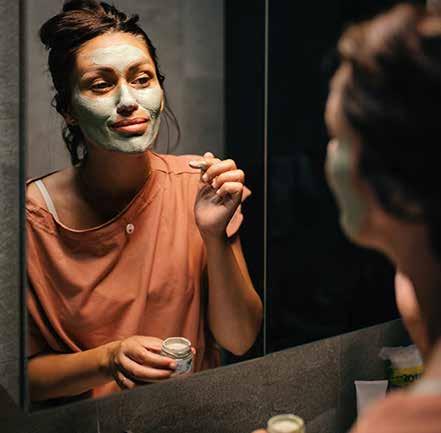
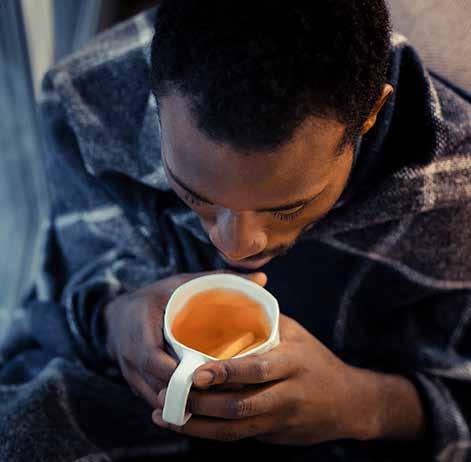


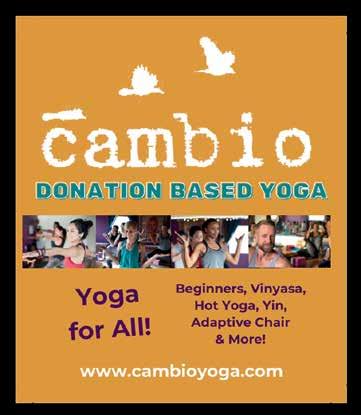
7
7 days a week with evening hours.*
Vaccines available 7 days a week with evening hours.*
Walk-ins welcome.
All ages
COVID-19, Tdap, Flu
All ages
Walk-ins welcome.
available 7 days a week with evening hours.* Walk-ins welcome.
Ages 19–26
COVID-19, Tdap, Flu
Walk-ins welcome.
All ages
Ages 19–26
COVID-19, Tdap, Flu
All ages
Meningococcal, HPV, Hepatitis B Ages 50–59
All ages
COVID-19, Tdap, Flu
Ages 19–26
Meningococcal, HPV, Hepatitis B Ages 50–59
Shingles, Hepatitis B Ages 60–64
COVID-19, Tdap, Flu
Ages 19–26
Shingles, Hepatitis B
Meningococcal, HPV, Hepatitis B
Shingles, RSV
Ages 19–26
Ages 50–59
Ages 65 & older
Ages 60–64
Meningococcal, HPV, Hepatitis B
Shingles, RSV
Shingles, Hepatitis B
Meningococcal, HPV, Hepatitis B Ages 50–59
Shingles, RSV, Pneumococcal
Ages 60–64
Ages 50–59
Ages 65 & older
Shingles, Hepatitis B
Shingles, Hepatitis B
Shingles, RSV
Shingles, RSV, Pneumococcal
Ages 60–64
Ages 60–64
Ages 65 & older
Shingles, RSV
Shingles, RSV
Shingles, RSV, Pneumococcal
Stop by today to find out which vaccines are recommended for you based on your age, health conditions, lifestyle and more. Vaccines
Ages 65 & older
Ages 65 & older
and
Stop by today to find out which vaccines are recommended for you based on your age, health conditions, lifestyle and more.
Shingles, RSV, Pneumococcal
Shingles, RSV, Pneumococcal
Stop by today to find out which vaccines are recommended for you based on your age, health conditions, lifestyle and more. Vaccines available 7 days a week with evening hours.*
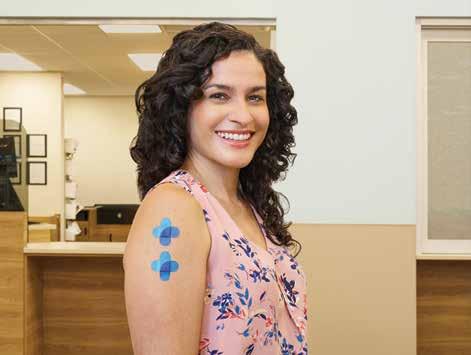
Stop by today to find out which vaccines are recommended for you based on your age, health conditions, lifestyle and more.
aging global population and rising temperatures
millions are at risk

By Deborah Carr, Boston University; Enrica De Cian, Ca’ Foscari University of Venice; Giacomo Falchetta, Ca’ Foscari University of Venice; and Ian Sue Wing, Boston
University THE CONVERSATION
A deadly heat wave gripped large regions of Asia for weeks in spring 2024, sending temperatures in India’s capital region over 120 degrees Fahrenheit (49 Celsius) in late May. Officials in Delhi warned residents that they could face power outages and water shortages.
Earlier in the month, campaigning politicians, news announcers and Indian voters waiting in long lines had passed out in the oppressive heat.
From as far north as Japan to as far south as the Philippines, the relentless heat wreaked havoc on everyday life. Students and teachers in Cambodia were sent home from school in early May, as their hand-held fans provided little protection against the stifling heat and humidity in their poorly ventilated classrooms. Farmers in Thailand saw their crops wither and mourned the loss of livestock that perished under the punishing sun. Hundreds of people died from the heat.
Most of the planet has suffered the dire effects of extreme heat in recent years. Phoenix hit 110 F (43.3 C) or higher for 31 straight days in summer 2023, and Europe saw unprecedented heat that killed hundreds and contributed to devastating wildfires in Greece.
Regardless of where or when a heat wave strikes, one pattern has been a constant: Older adults are the most likely to die from extreme heat, and the crisis is worsening.
We study climate change and population aging. Our research documents two global trends that together portend a dire future.
More older adults will be at risk of heat stress
First, temperatures are hotter than ever. The nine-year period from 2015 and 2023 had the highest average temperatures since global records began in 1880.
Second, the population is aging worldwide. By 2050, the number of people ages 60 and older will double to nearly 2.1 billion, making up 21% of the global population. That proportion is 13% today.
These combined forces mean that ever-rising numbers of vulnerable older adults will be exposed to intensifying heat.
To understand the risks ahead, we developed population projections for different age groups and combined them with climate change scenarios for the coming decades. Our analyses show that by 2050, more than 23% of the world population ages 69 and older will be living in regions where peak temperatures routinely surpass 99.5°F (37.5°C), compared with just 14% today.
That means that as many as 250 million additional older adults will be exposed to dangerously high temperatures.
Mapping the data shows that most of these older adults live in lower- and middle-income countries with insufficient services and limited access to electricity, cooling appliances and safe water.
In historically cooler regions in the Global North, including North America and Europe, rising temperatures will be the main force driving older adults’ heat exposure. In historically hotter regions
in the Global South such South America, population in longevity mean that steeply older adults will be exposed related risks.
Policymakers, communities, residents themselves need risks and be prepared because special vulnerabilities to
Extreme heat is especially harmful to older adults
High temperatures are everyone, but for older adults be deadly.
Extreme heat worsens health conditions such as disease and can cause delirium. don’t sweat as much as younger makes it harder for their when temperatures spike. are intensified by common medications, such as anticholinergics, further reduce the capacity Spending time outdoors can cause dehydration, a the side effects of prescription as diuretics and beta-blockers. make older adults weak their risk of falls and injury. even worse in regions lacking affordable drinking water. Poor air quality makes especially for those who problems such as chronic disease, or COPD.
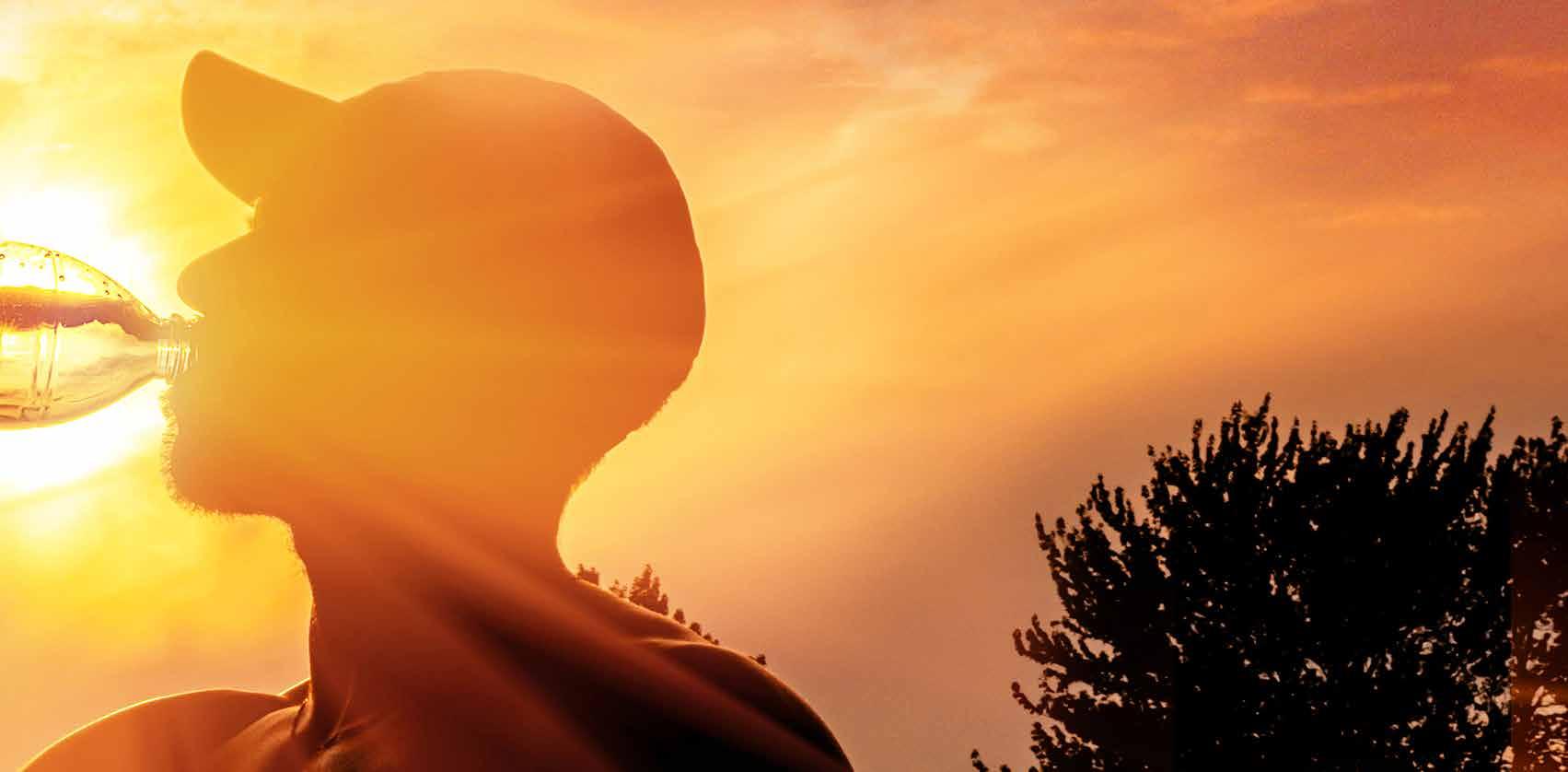
as Asia, Africa and population growth and increases steeply rising numbers of exposed to intensifying heatcommunities, families and older need to understand these because of older adults’ heat.
especially adults oppressive for adults they can common age-related as heart, lung and kidney delirium. Older people younger people, which bodies to cool down spike. These problems common prescription anticholinergics, which capacity to sweat. outdoors in hot humid weather a problem worsened by prescription medications such beta-blockers. Dehydration can and dizzy, increasing injury. These threats are lacking access to safe and water. it difficult to breath, already have lung chronic obstructive pulmonary
For older adults with physical health problems, temperatures as low as 80 F (26.7 C) can pose significant danger. And when humidity is as high as 90%, even 78 F (25.6 C) can be hazardous to older adults.
Nighttime heat is especially harmful for older adults whose homes lack air conditioning or who can’t afford to run their air conditioners for long periods. The ideal temperature for older adults’ restful sleep is between 68 and 77 F (20 and 25 C), and sleep quality diminishes as temperatures rise. A night of restless sleep can make an older adult more depressed and confused during their waking hours. Medications also can lose their effectiveness if stored in places much warmer than 77 F (25 C).
Older adults also may suffer emotionally during stifling heat waves
Being stuck indoors when temperatures are unbearable can make older adults bored, depressed and isolated. People with cognitive impairments may underestimate the dangers of extreme heat or may not understand the heat advisories.
Those who have physical mobility limitations or lack access to trans-portation can’t easily travel to public cooling centers — if there is one nearby — or find relief in nearby “green and blue areas,” such as parks and lakes.
These threats are especially dire in low- and middle-income nations, where older adults are more likely to live in substandard housing and lack access to high-quality health care or ways to cool down in the heat. We talk about this as “systemic cooling poverty.”
Policymakers can work to cut greenhouse gas emissions from fossil fuels in vehicles, power plants and factories, which drive global warming, and develop effective plans to protect older people from heat risk. Older adults and their caregivers also can take steps to adapt.
But efforts to help need to be tailored to each region and population.
Wealthy municipalities can increase public investments in early warning systems and ride services to cooling centers and hospitals. They can use geographic information systems to identify neighborhoods with high concentrations of older adults and expand power grids to manage increasing demand for air conditioning.
In regions with substandard housing, limited access to clean water and few public supports such as cooling centers, much larger changes are necessary. Providing better health care, water and housing and reducing air pollution that can mitigate health problems during heat waves require significant changes and investments many countries struggle to afford.
The World Health Organization and Pan American Health Organization warn that this decade will be critical for preparing communities to handle rising heat and the risk to aging populations. Across all regions, researchers, practitioners and policymakers could save lives by heeding their call.
The Conversation (https://theconversation.com/us) is an independent and nonprofit source of news, analysis and commentary from academic experts.
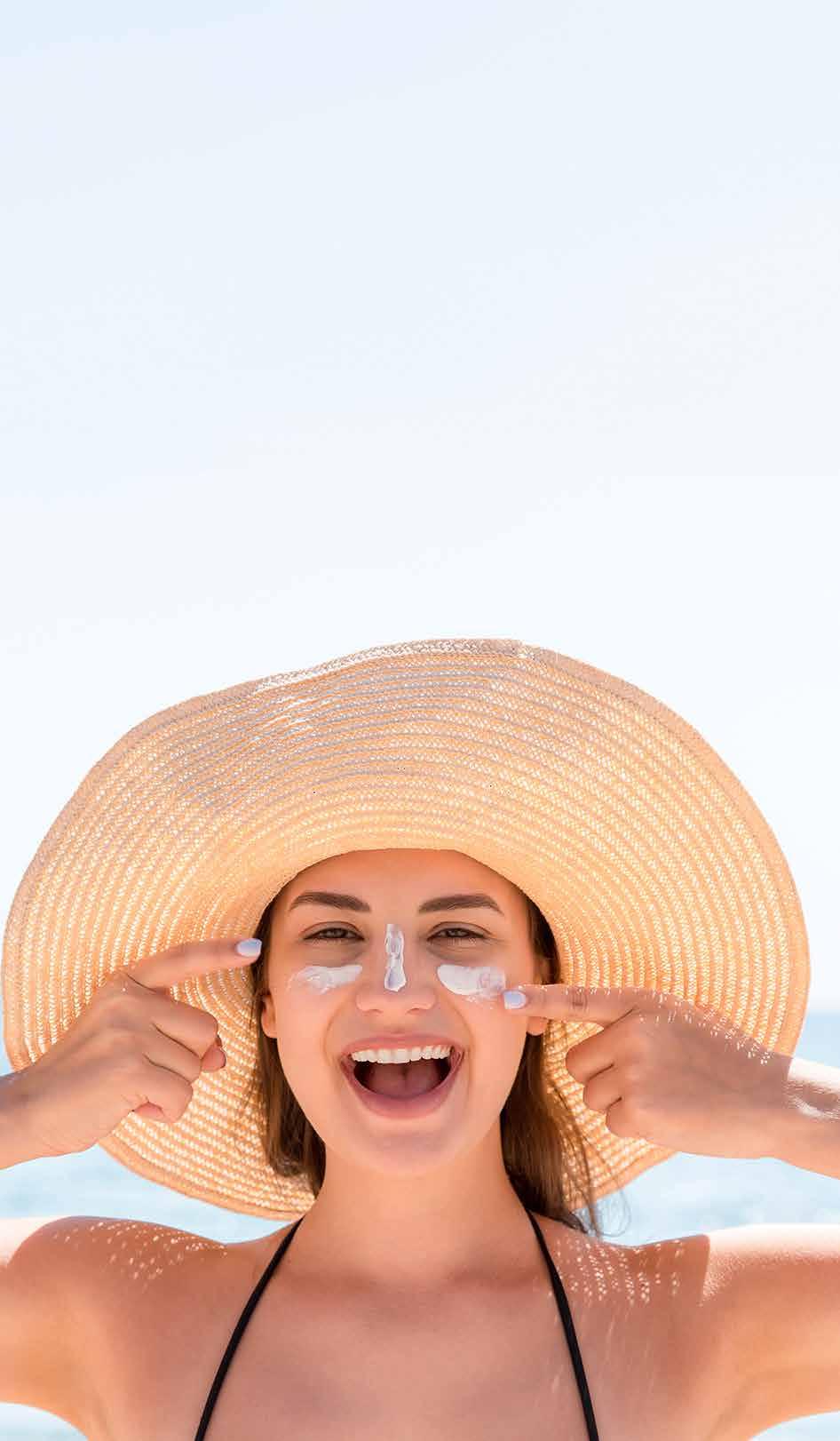

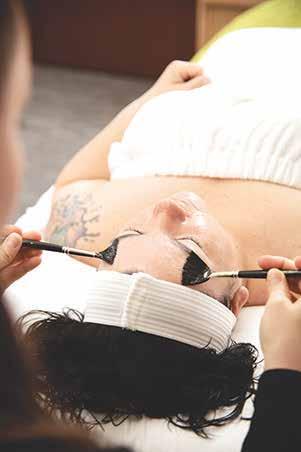
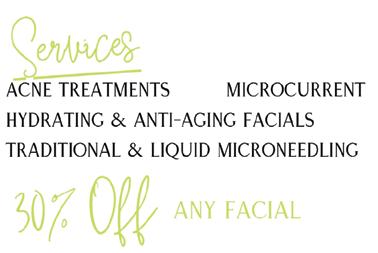
The sun is an important star in our solar system. The sun warms the Earth and promotes animal and plant life on the planet. The sun also is vital for human health.
The National Institutes of Health says the human body was built to make good use of the sun. Sunlight helps regulate sleeping patterns, keeping one awake during the day and sleeping soundly at night. Sunlight also helps the body produce vitamin D, which is necessary for immune system support and normal bone function. The sun can boost mood. Lack of sun exposure, especially in winter months, can increase the risk for seasonal affective disorder, which is a form of depression. According to the World Health Organization, UV rays from the sun also can treat some health conditions, like skin ailments such as eczema and psoriasis. The sun also may help combat rickets or jaundice.
While there are many benefits of getting ample sunlight, there are also some downsides to the sun and UV exposure, particularly regarding the skin. Yale Medicine says that too much sun exposure can lead to photoaging of the skin. Symptoms include wrinkling, loss of skin elasticity, hyperpigmentation, sun spots and redness. Photodamage causes changes to DNA at the cellular level and in the deepest layers of the skin, so it can take years before the effects are noticeable. But the damage already has been done.
Damage to the skin can happen to anyone, but often is more pronounced in people with pale or fair skin, light-colored eyes, and with blonde or red hair. These people burn easily and may not tan readily. Overexposure to the sun also increases the risk for skin cancer, the most common cancer in the United States and elsewhere around the world. UV rays can cause changes to cells that make them rapidly grow and divide, leading to extra cells known as tumors. Cancerous tumors can form, and cancer may spread from the skin to other organs of the body, says the NIH. Basal cell and squamous cell carcinomas affect more than two million people each year in the U.S. Melanoma is less common but more serious, affecting roughly 68,000 Americans each year.
The Dallas Dermatology Center says about 10 to 30 minutes of safe sun exposure each day can help a person get the benefits of vitamin D and other perks of the sun without the harmful side effects.
Individuals concerned about sun exposure should speak with their dermatologists to determine healthy ways to get some sun.








If you are ready to take the next step on your journey to fulfillment, satisfaction, and living your life purpose, “Fulfilled: Unlocking Passion, Purpose, and Joy in Your Life” is an exciting new experience that is more than a self-help book — it is a comprehensive exploration of what makes life truly meaningful.
Author Steven Alan Vote is a professional photographer whose work has taken him around the globe. His extensive experience has led him to develop photoSana which combines scientific wellness practices to promote joy, balance, peace, productivity and overall contentment — leading to a richer, bolder, and more fulfilling life. His book includes 101 letters of encouragement across chapters on topics such as resilience and overcoming adversity, courage and facing fears, fostering creativity, reflection, and being present and experiencing true inner peace.
“Fulfilled” appeals to a diverse audience thanks to its unique content delivery style. Designed for bitesized encounters taken a chapter or a few pages at a time, each time readers open the book, they will have a new experience. The photoSana strategies are easy to implement and incredibly practical, offering both immediate comfort and long-term opportunities to build new, life-changing habits. For fans of “The Art of Happiness,” “Atomic Habits” and “The Second Mountain,” this book is a cannot-miss encounter with beauty that will inspire, encourage and challenge you to overcome whatever stands in your way.




Carefree Chiropractic has been making a world of difference in Colorado Springs since 1998. We offer chiropractic services, massage therapy and supplements. We are offering a $50 new patient consult, examination, X-rays and the adjustment for those ready to make a difference in their health
N Academy Blvd,
CO 80917

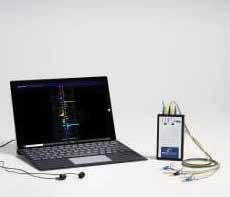


Scan to register!
Join Colorado Community Health Alliance (CCHA) at the Gazette’s Health and Wellness Expo on August 24!
We’ll have a booth alongside El Paso County Department of Human Services (DHS), where our knowledgeable team members will be ready to answer your questions about Health First Colorado (Colorado’s Medicaid program) benefits.
Plus, our DHS partners will be there to help with Medicaid eligibility and applications.
Don’t miss this opportunity to get the support you need— stop by and see us!

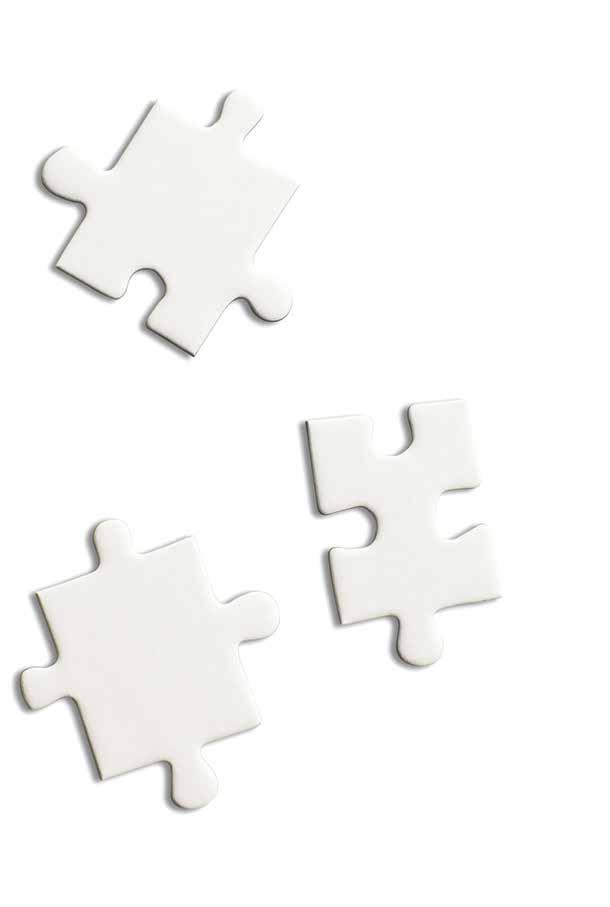
Today, there are nearly 7 million Americans living with Alzheimer’s. The lifetime risk for the disease at age 45 is one in five for women and one in 10 for men. The brain changes that cause Alzheimer’s are thought to begin 20 years or more before symptoms start, which suggests that there may be a substantial window of time in which we can intervene in the progression of the disease.
Experts believe there is not a single cause of Alzheimer’s. It is likely the disease develops because of multiple factors. While not a direct cause of Alzheimer’s, the greatest known risk factor is advancing age. Although some risk factors like age cannot be changed, others — including physical activity, not smoking, education, challenging your mind, blood pressure and diet — may be modified to reduce a person’s risk.
“We want people to know there are steps they can take to potentially reduce their risk of cognitive decline. We also want to encourage anyone experiencing memory or thinking problems to talk to their doctor,” said Sam Fazio, senior director, Quality Care and Psychosocial Research, Alzheimer’s Association. “There are many possible causes — and if it is Alzheimer’s disease, there are numerous benefits to getting a timely diagnosis.”
The Alzheimer’s Association offers these five suggestions to take charge of your brain health:
1. Incorporate healthy habits that may reduce the risk of cognitive decline: Research shows that adopting healthy habits may reduce the risk of cognitive decline. As many as 40% of dementia cases worldwide may be attributable to modifiable risk factors. Based on mounting scientific evidence, the Alzheimer’s Association encourages individuals to incorporate these 10 Healthy Habits to reduce the risk of cognitive decline and possibly dementia. Whatever your age or stage of life, now is the time to take charge of your brain health.
• Challenge your mind.
• Stay in school.
• Get moving.
• Protect your head.
• Be smoke-free.
• Control your blood pressure.
• Manage diabetes.
• Eat aright.
• Maintain a healthy weight.
• Sleep well.
2. Learn the early warning signs of Alzheimer’s and other dementia: Many people equate Alzheimer’s to memory loss and, while that is one of the most common symptoms, there are other warning signs that can signal cognitive decline, including altered judgment, mood changes, challenges in decision-making, and planning and carrying out projects. Some memory changes can be a normal part of the aging process, but when changes start to interfere with daily living or stray drastically from the person’s normal behavior, it is best to get it checked. The Alzheimer’s Association offers these 10 Early Signs and Symptoms of Alzheimer’s to help people identify potential early warning signs of Alzheimer’s or other dementia.

“We want people to know there are steps they can take to potentially reduce their risk of cognitive decline.
“— Sam Fazio, senior director, Quality Care and Psychosocial Research, Alzheimer’s Association
3. Be proactive in addressing memory and thinking problems: Studies show many individuals experiencing memory and thinking problems often put off discussing them with a doctor. A 2022 Alzheimer’s Association report found that 60% of U.S. adults say they would not see a doctor right away if they were experiencing symptoms of mild cognitive impairment. Rather, they would wait until symptoms persisted, worsened or until family and friends expressed concern.
However, early detection and diagnosis of Alzheimer’s and other dementia offers the best opportunity for care, management and treatment. It also provides diagnosed individuals more time to plan for the future, adopt lifestyle changes that may help slow disease progression, participate in clinical trials and to live with a higher quality of life, for as long as possible. In addition, there are now treatments that may slow disease progression for people in the early stage of Alzheimer’s, making a timely diagnosis critically important. If you or a family is experiencing memory or thinking problems, it is important to get it checked. The Alzheimer’s Association offers tips and resources to help families and friends navigate these conversations.

• Memory loss that disrupts life.
• Challenges in planning or solving problems.
• Difficulty completing familiar tasks.
• Confusion with time or place.
• Trouble understanding visual images and spatial relationships.
• New problems with words in speaking or writing.
• Misplacing things and losing the ability to retrace steps.
• Decreased or poor judgment.
• Withdrawal from work or social activities.
• Changes in mood and personality.

4. Help accelerate disease-related research: Clinical trials hold the key to new and better Alzheimer’s disease treatments. Individuals living with Alzheimer’s and other dementia, caregivers and healthy volunteers are needed to participate in clinical trials that help advance Alzheimer’s research. Today, approximately 55,000 volunteers are needed for more than 180 clinical trials. The Alzheimer’s Association TrialMatch is a free, easy-to-use service that connects interested individuals with appropriate trials.
5. Volunteer with the Alzheimer’s Association: Volunteers are the key to making a difference in the lives of people facing Alzheimer’s and dementia. When you volunteer with the Alzheimer’s Association, you join a network of passionate people who are working to fight this devastating disease, honor loved ones, and bring care and support to those who need it.



PR NEWSWIRE
The American Massage Therapy Association is sharing recent research on how massage therapy can provide benefits from infancy through end of life. Across all ages, massage therapy can be a therapeutic approach to enhancing physical and emotional well-being. Explore the latest studies on how massage therapy can help improve the quality of life for infants, middle-aged individuals, and older adults.
A 2023 study investigated the impact of motherperformed infant massage on infantile eczema, quality of life and growth. Infants are prone to eczema because their skin barrier is more fragile, affecting an estimated 15% to 20% of children under the age of two. In a randomized controlled trial, 66 full-term infants with eczema were divided into an eczema control group and an eczema with MPIM group, alongside a healthy full-term control group. Mothers in the EC group received routine care instructions, while those in the EM group received guidance for providing massage in addition to routine care. Data collected over twoand five-month intervals revealed significantly lower eczema severity, eczema remission and reduced relapse, along with improved quality of life in the group that received massage.
According to the National Center for Health Statistics, 44% of adults aged 45-65 experience back pain. A recent study compared the effects of connective tissue massage and classical massage on chronic mechanical low back pain, focusing on pain relief and autonomic responses. Seventy patients were randomly assigned to either a connective tissue massage group or a classical massage group, receiving a fourweek treatment regimen of hot packs, exercises and massage therapy sessions. Pain intensity, autonomic responses (heart rate, blood pressure, skin temperature), disability, quality of life and sleep quality were evaluated before and after the treatment, as well as after a six-week follow-up. Both massage types significantly reduced pain and improved disability, quality of life and sleep quality, with classical massage showing a more pronounced pain reduction by the second week.
A nationwide survey of physicians, physician assistants and nurse practitioners in palliative care documented recommendation rates of integrative therapies to target symptoms of palliative care patients. The survey found that massage therapy was the third most recommended integrative care modality behind mind-body interventions like meditation and biofeedback. The integrative therapies aimed to reduce pain, anxiety, mood disturbances and distress.
“Massage therapy offers a wide range of benefits tailored to the unique needs of individuals at different stages of life, making it a valuable practice for enhancing physical and mental health throughout one's lifespan,” said AMTA National President Kimberly Kane-Santos.

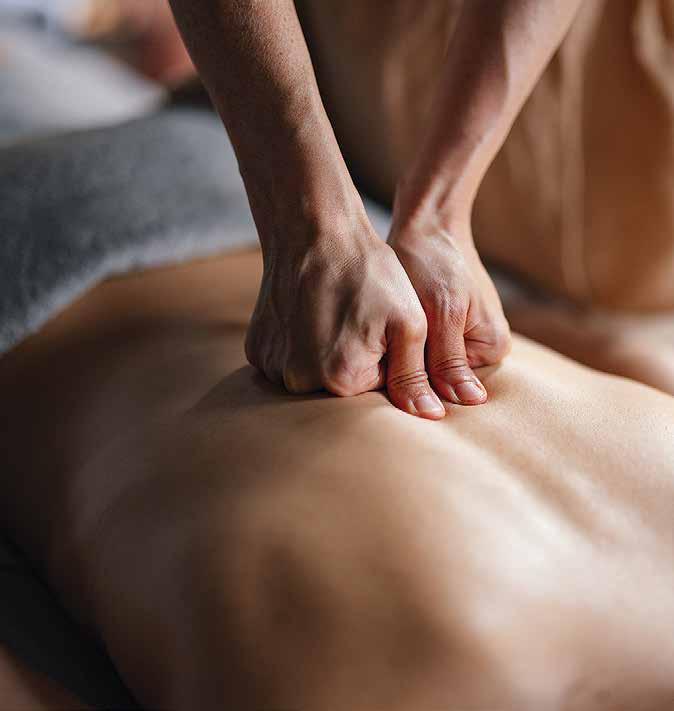
L, Yu L, Zhang S, Liu J, Xiong Y. “The positive effect of motherperformed infant massage on infantile eczema and maternal mental state: A randomized controlled trial.” Front Public Health. 2023 Jan 11:10.
Yuksel, Inc, Er, Goktug. “A comparison of the effects of connective tissue massage and classical massage on chronic mechanical low back pain.” — Medicine (Baltimore). 2023 Apr 14; 102.
Goel AR, Henderson CR, Reid MC. “Do Palliative Care Providers Use Complementary and Integrative Medicine? A Nationwide Survey.” J Pain Symptom Manage. 2022 Apr;63(4):599-609.

Saturday, August 24 • Colorado Springs Event Center • Visit with these exhibitors:

